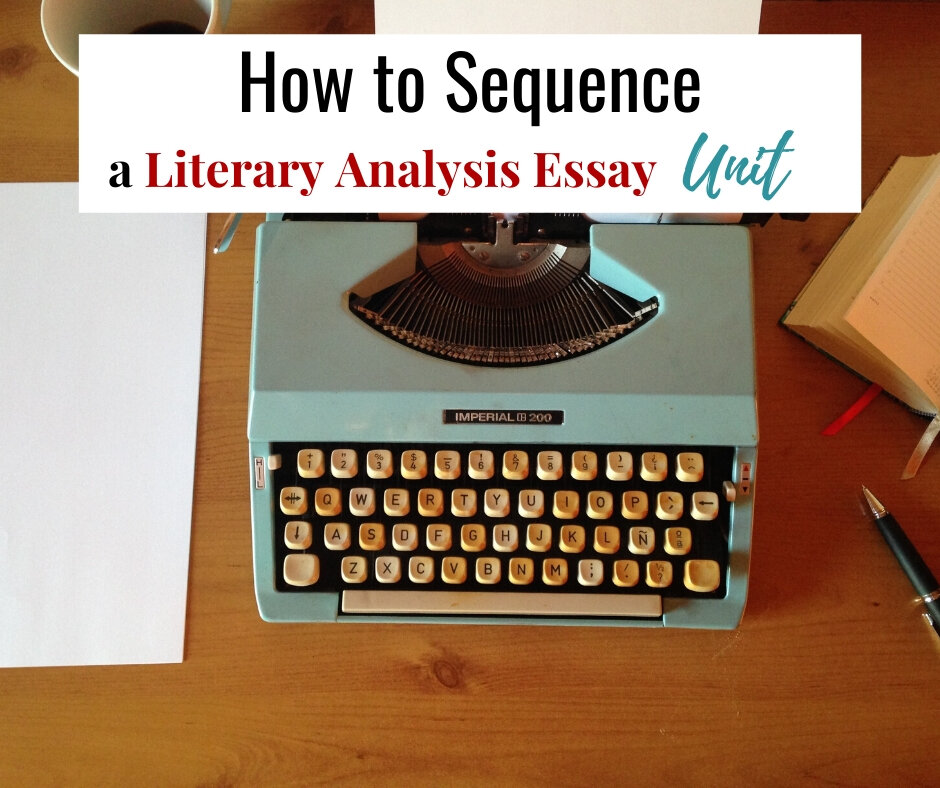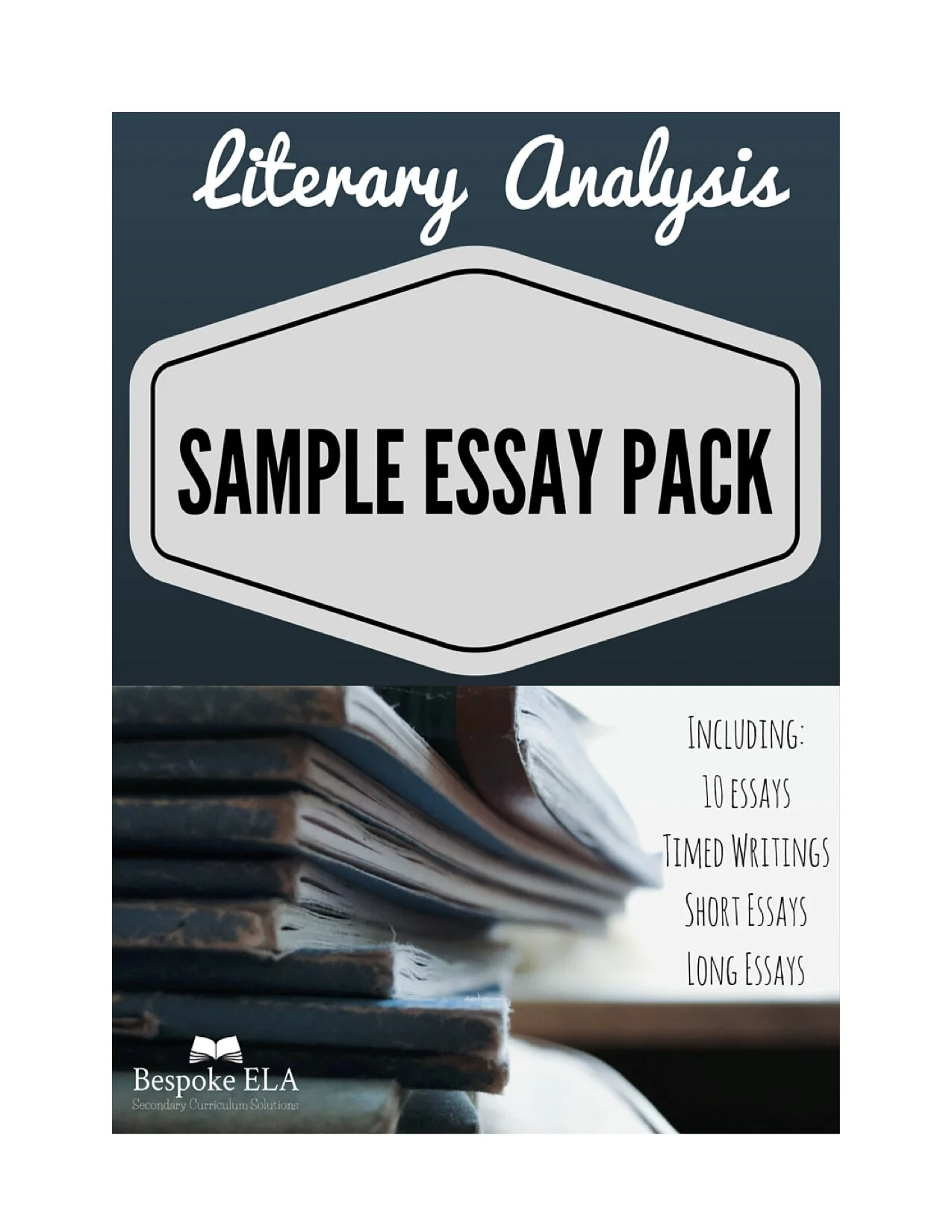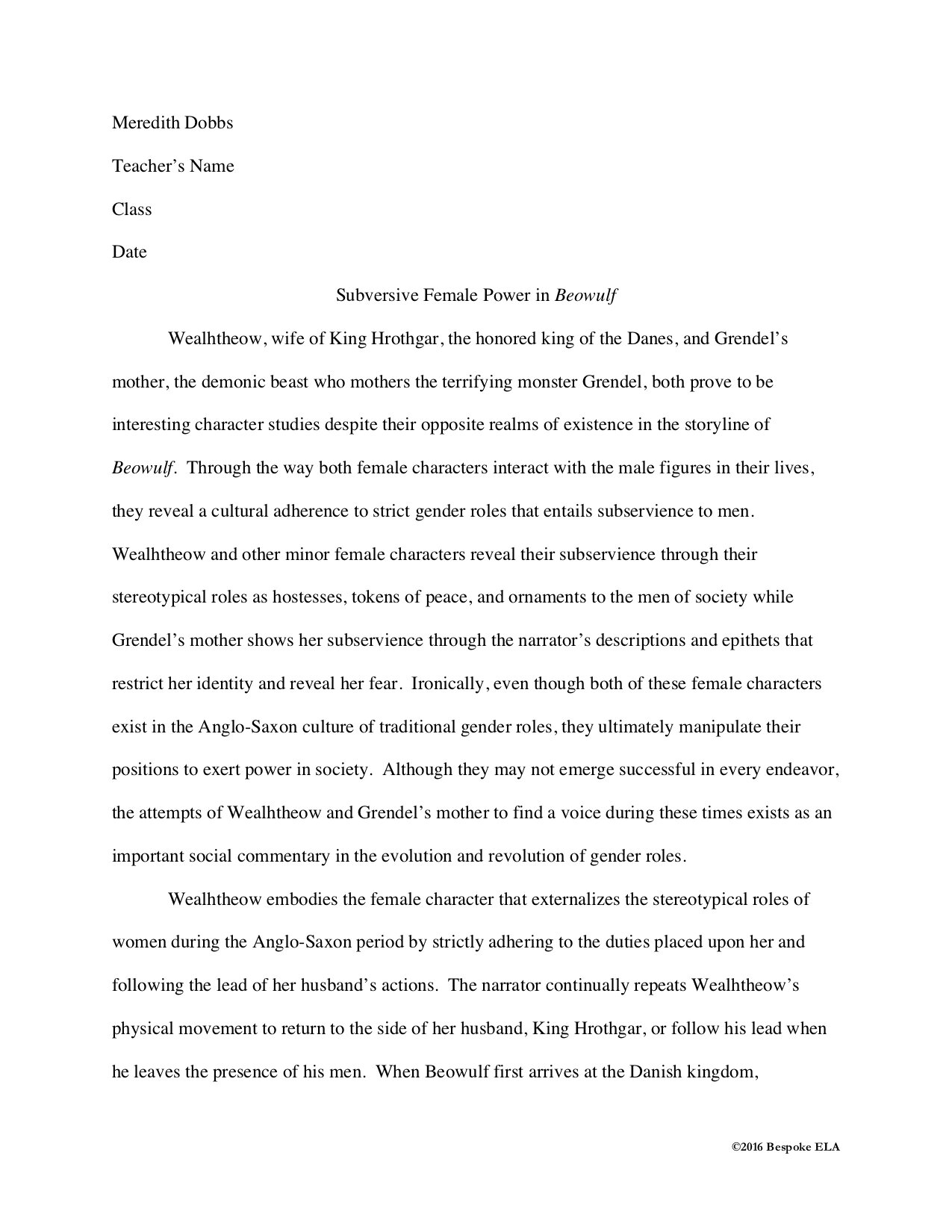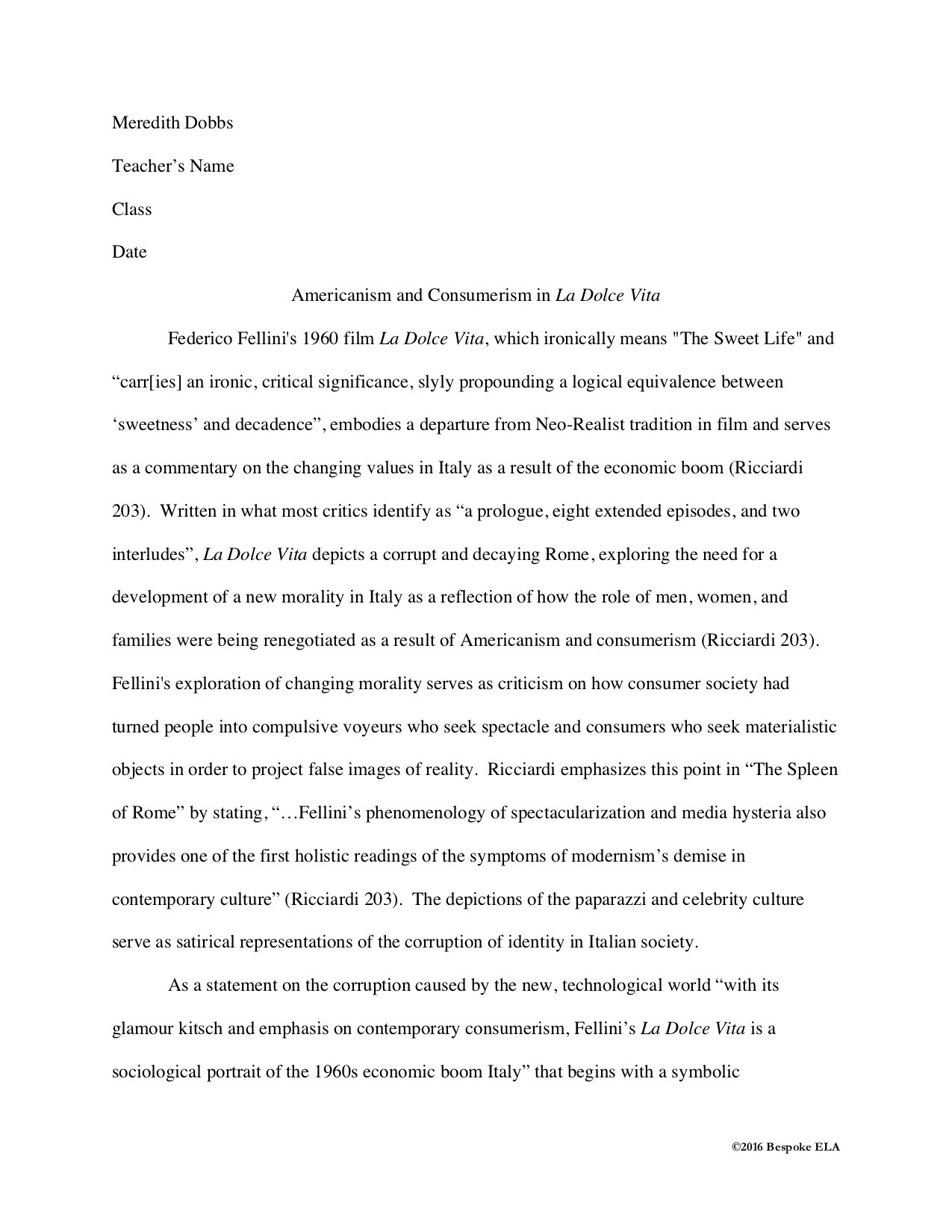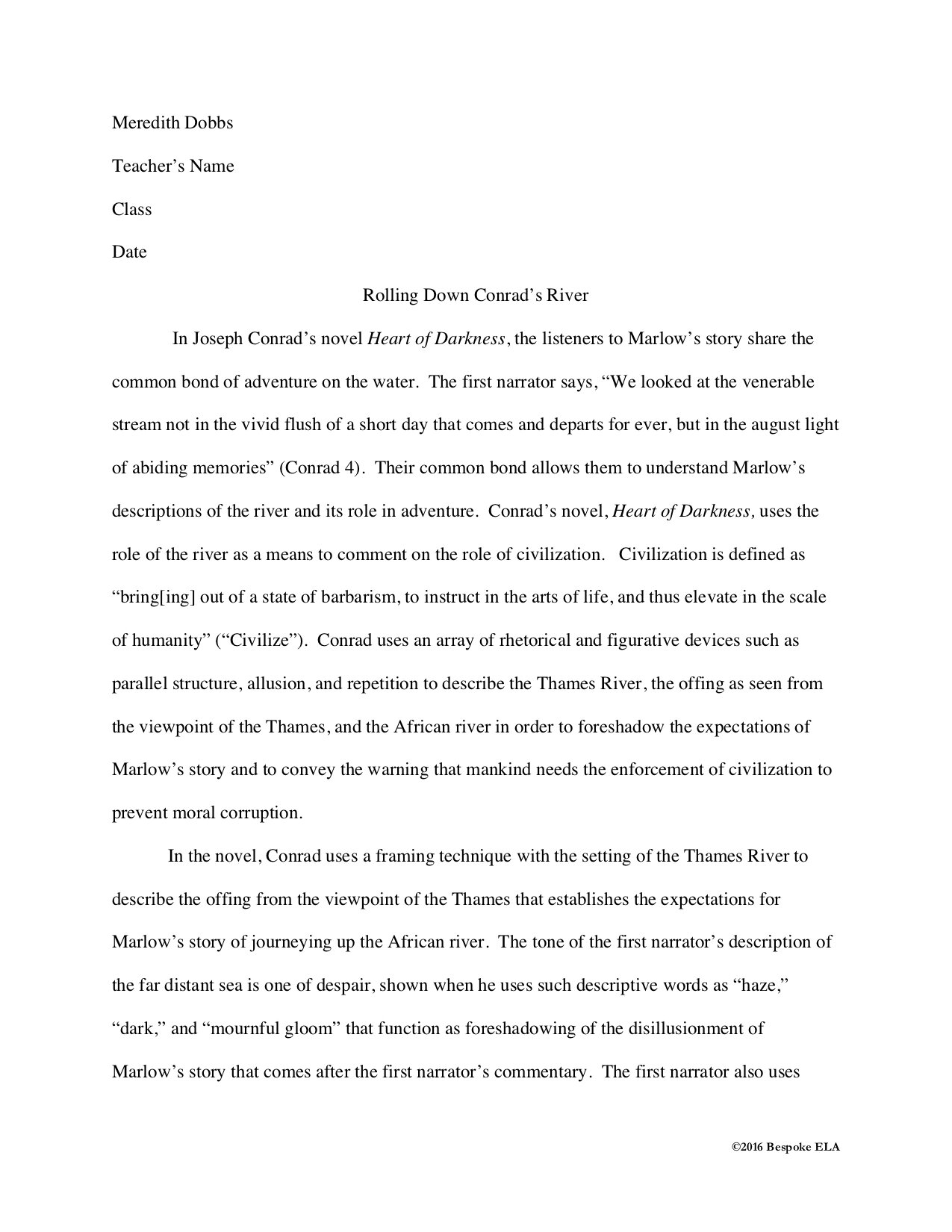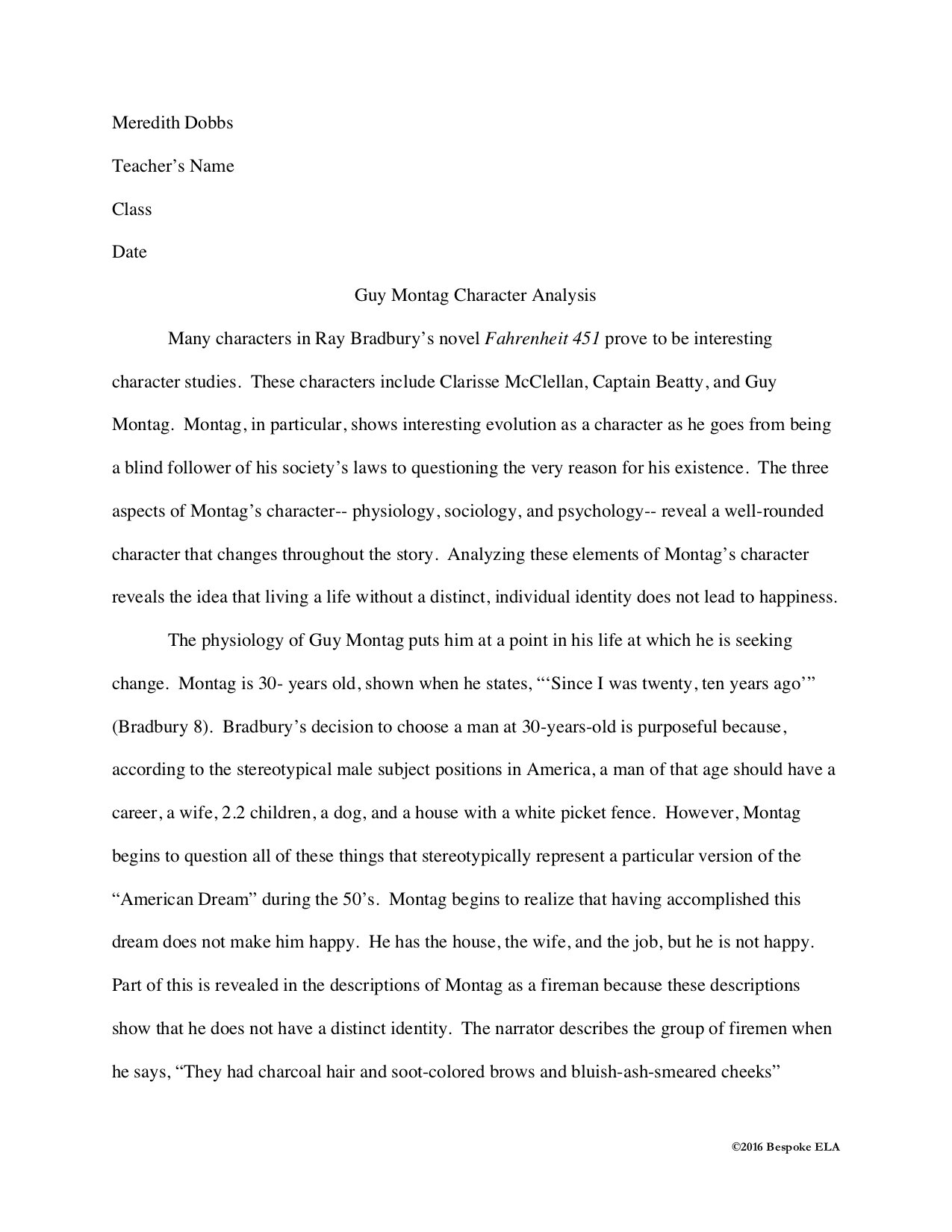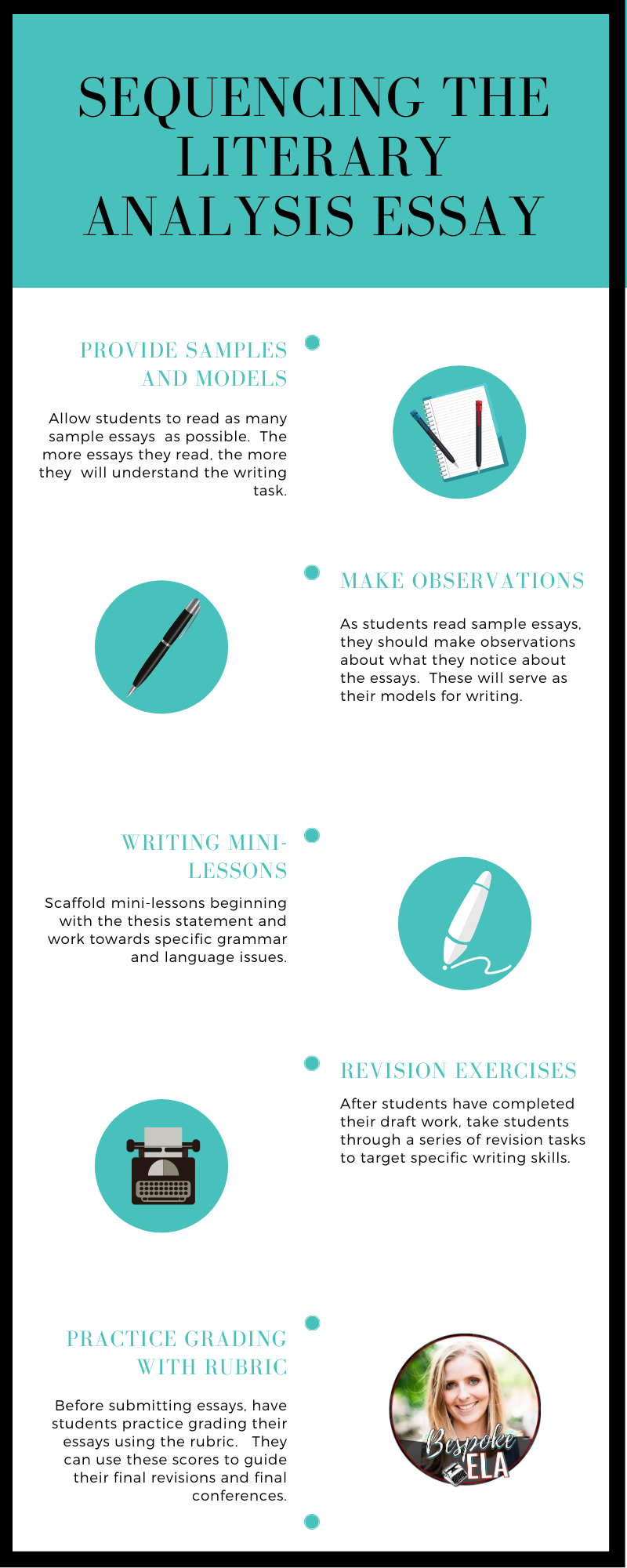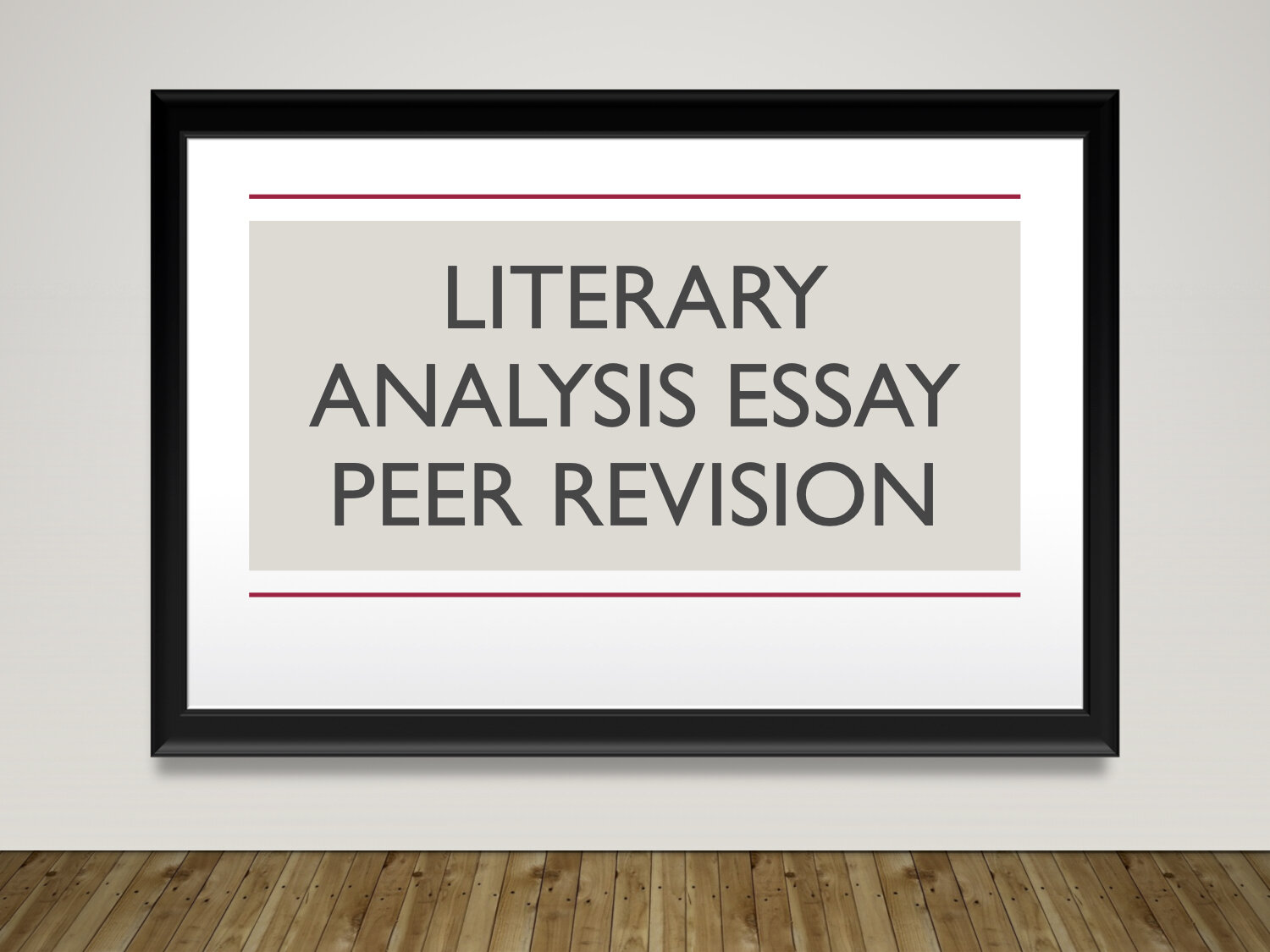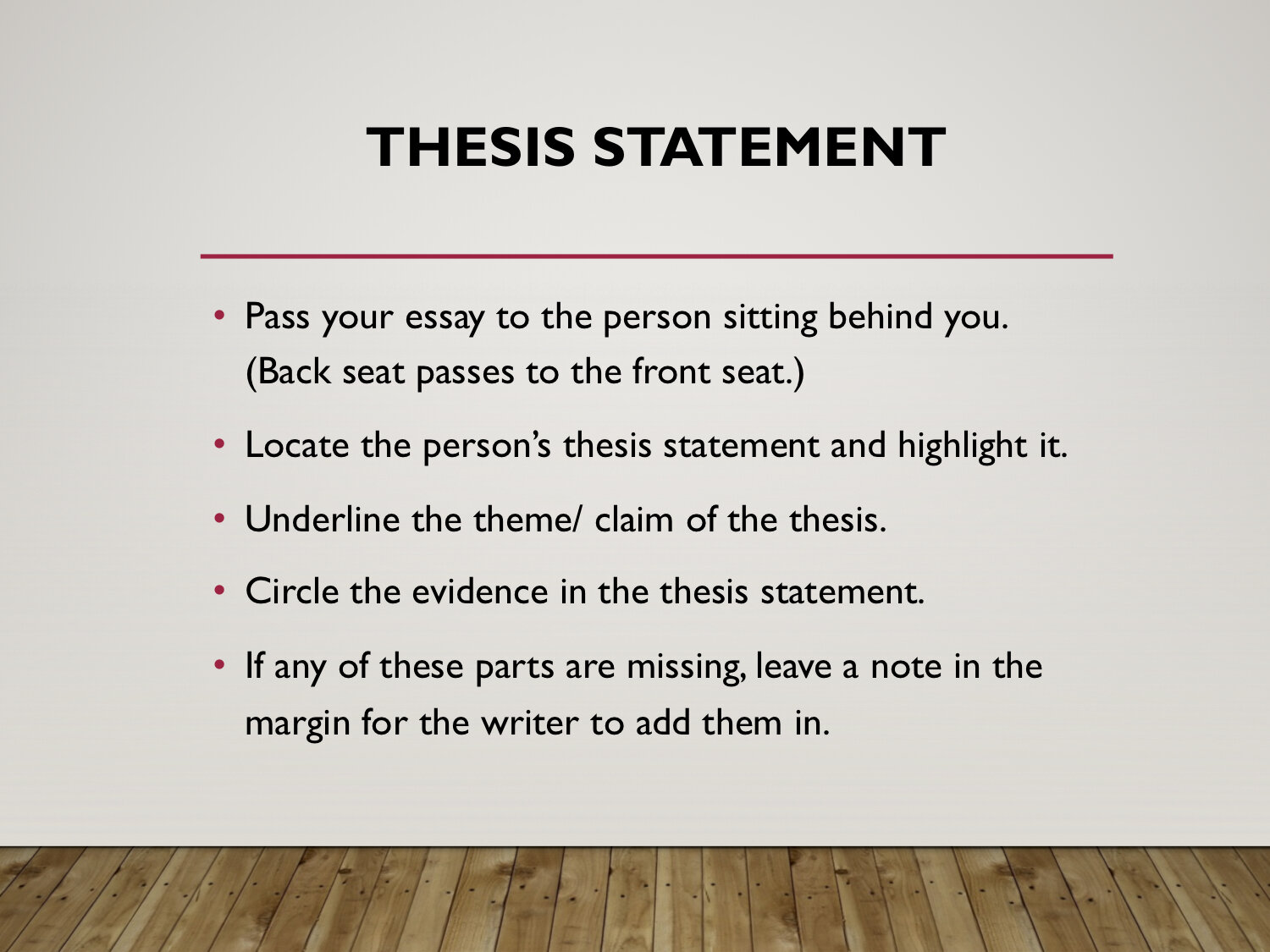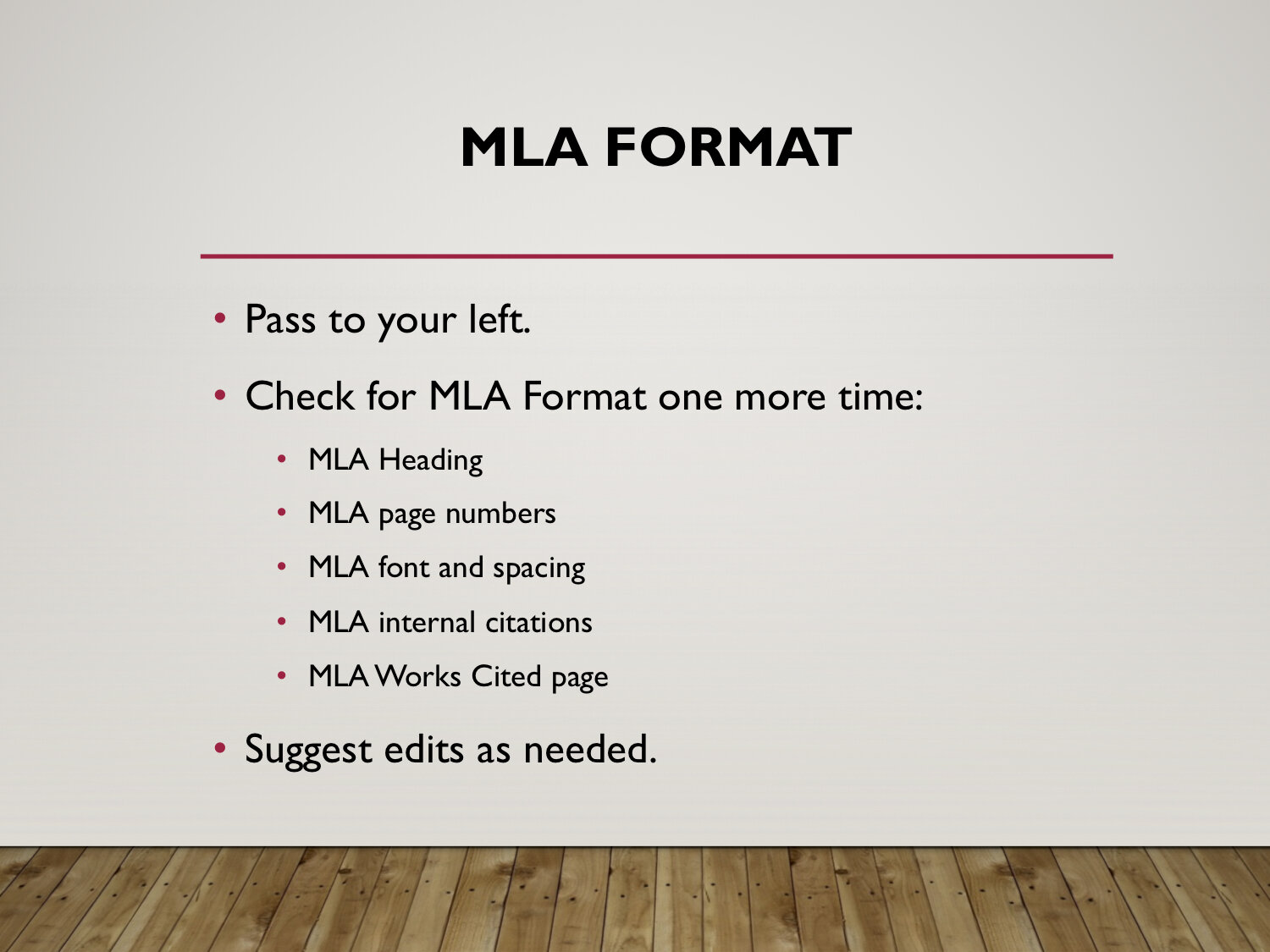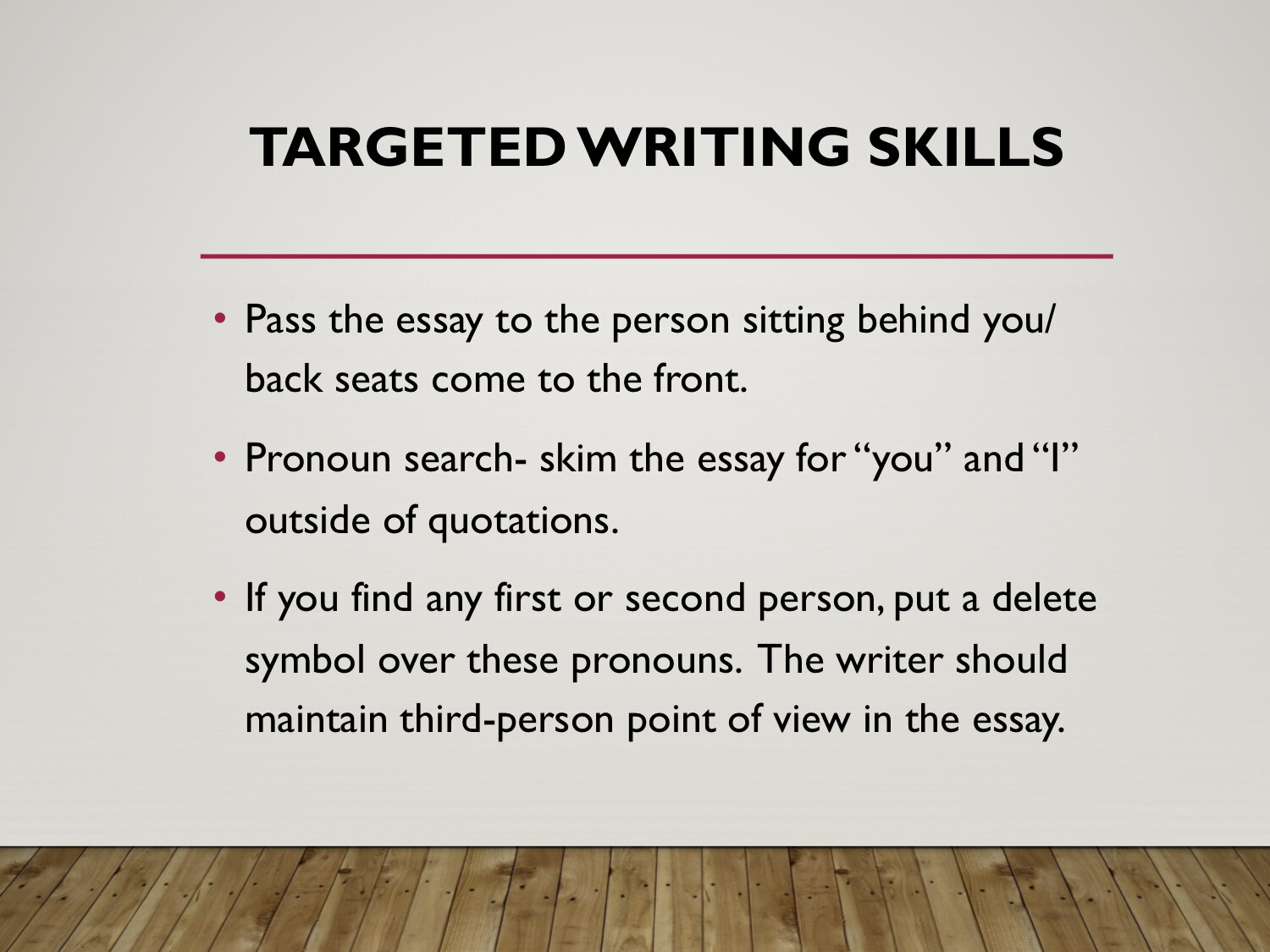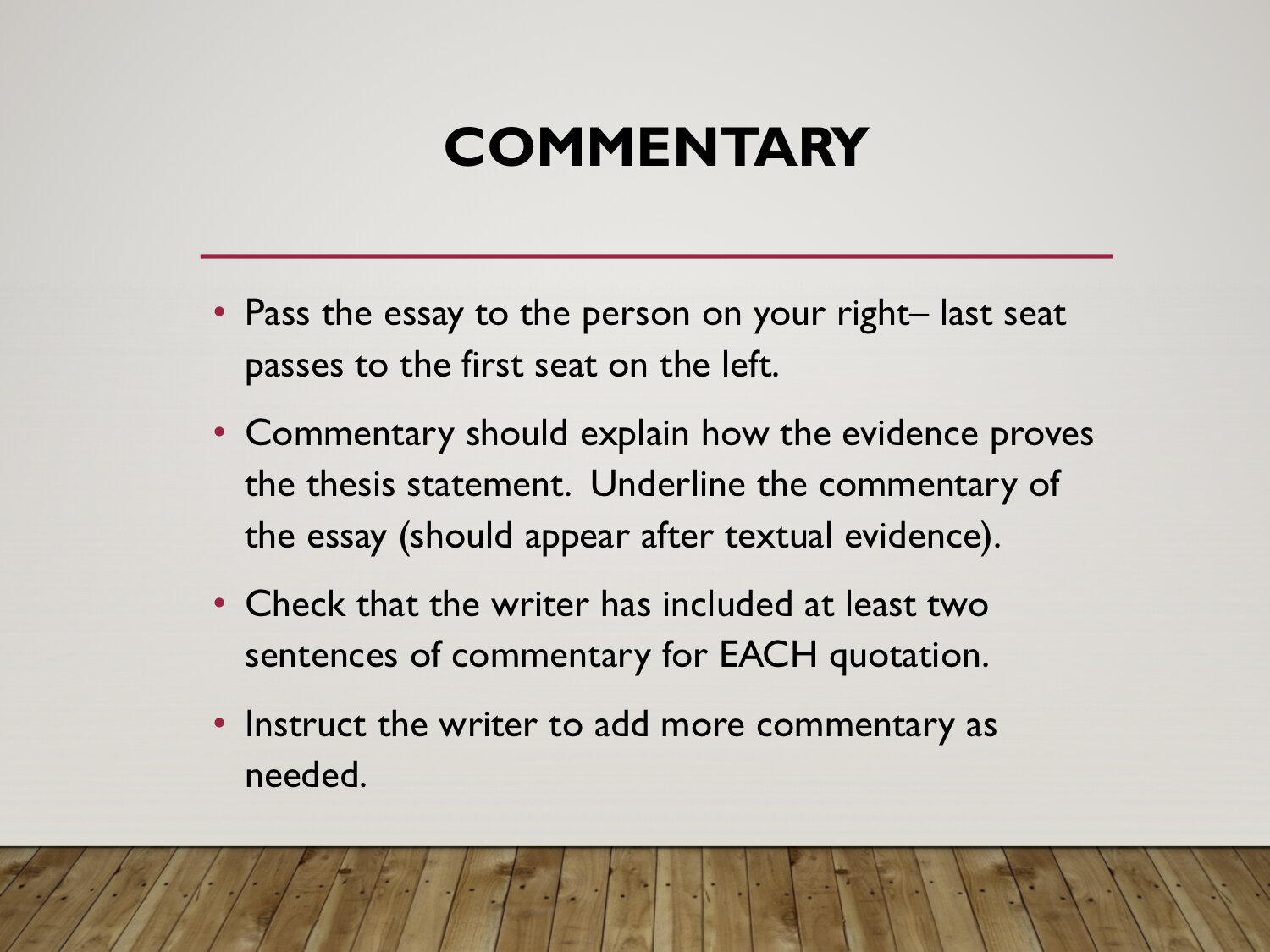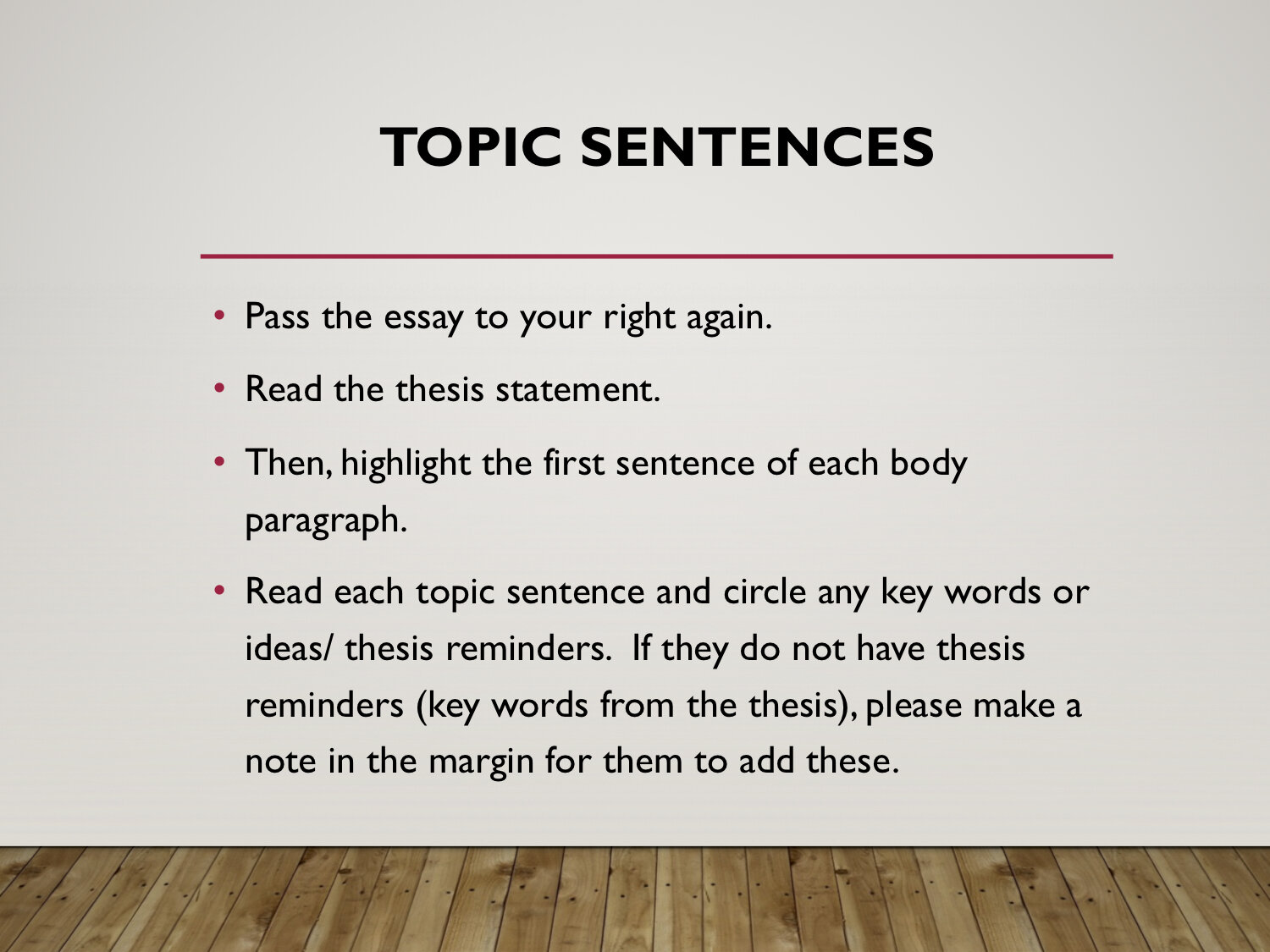Teaching literary analysis is key to teaching secondary ELA. Students need to be able to construct thematic arguments and prove them using textual evidence. But this process can be daunting for both students and teachers. It can be confusing and frustrating on figuring out where to start and how to sequence instruction. We all know that scaffolding is key for student success, and that same concept applies to literary analysis instruction. The Literary Analysis Mega Bundle from Bespoke ELA follows the same basic framework as outlined below.
Here’s how to sequence and scaffold mini-lessons for teaching literary analysis essay:
Begin with Models or Samples
The first step is to begin with models. Students need to see examples of end products before they ever attempt to do any writing. This concept is not restricted only to the literary analysis essay but applies to writing any type of essay. The more samples and models that students see before beginning the writing process, the more they will understand the process and the expectations. However, students need to go beyond passively looking over samples. They need to take two extra steps =
(1) Make observations & (2) Construct a rubric.
As students read through samples and models, they need to compile a list of their observations. Here are some guiding questions for the observation process:
What do these essays have in common?
How are they structured?
What type of evidence do they use?
What is the argument and where is it placed in the essays?
How do the writers explain the evidence?
What do you notice about the style and organization of the essays?
After students have gathered their observations, the next step is to have students create a rubric for grading. This is an important step to take before showing students your grading rubric and criteria. They need to be given the opportunity to synthesize their observations into their own rubric as evidence that they understand the writing task. Students can do this in individual groups first and then share with the entire class. This also enables students to take ownership of their learning because they determine how they will be assessed. After this process, you can give them your grading rubric and then discuss how it is similar or different from the student-generated version. Students will emerge from this process with a clear understanding of the expectations for the writing assignment, which will help them throughout the writing process. The Literary Analysis Mega Bundle begins with writing samples in order to clarify student understanding. Students can then use the samples as models as they write.
Just remember that the more samples students see, the better their final products will be. (and it rhymes!)
The Mini-lesson Framework
Once students have a clear understanding of the assignment, it’s time to move onto mini-lessons. The basic mini-lesson framework follows these steps:
Mini-lesson that targets a specific skill (5-10 minutes at the beginning of class)
Student practice, drafting, revision/ editing (10-30 minutes of class)
Share for feedback/ peer & teacher conferences (5-10 minutes of class)
By following this basic framework on writing workshop days, you can focus student attention to a specific skill, which helps them not feel overwhelmed by the process because it breaks down the process into doable steps. It is important to note that these steps build, so the order matters. I like to have students turn in evidence of skills before moving onto the next step— especially when it comes to the thesis statement. I want to make sure my students have a clear blueprint of their essays before they start writing. Here is a list of scaffolded mini-lessons included in the Literary Analysis Mega Bundle:
Topic vs. Theme
Theme Statement/ Claim
Selecting Evidence— elements and techniques
Outlining the essay
Topic & Concluding Sentences
Blending quotations
Commentary vs. Plot Summary
Commentary strategies
Introduction paragraph
Conclusion paragraph
Language & style editing
Revision & Submission
This general outline of skills will help take students from the thesis statement to the very last sentence of the essay. Most of the time should be spent on crafting the thesis statement and commentary. The commentary, or analysis/ explanation, is the actual meat of the essay— and it’s the most difficult. For more tips on crafting commentary for literary analysis, check out this other post I wrote with tips for success.
Step-by-Step Peer Revision
At the end of the writing process, I take my students through a guided peer revision (facilitated through Power Point) that targets each of the major writing skills above. These also correspond to my grading rubric and the student-created rubric from the beginning of the writing process. I find that being more teacher-directed with the peer revision process helps to keep students focused and on task. The way this works is that I use a Power Point (which you can find in the FREEBIE LIBRARY by clicking here and subscribing), and each slide contains a revision step that begins with the thesis statement and introduction paragraph and then moves through the essay to the conclusion paragraph and style/ academic language of the essay. For each slide, or revision task, students pass the essay. By passing the essay each time, students get up and move their bodies, and the energy of movement also helps to keep them on task.
The Literary Analysis Mega Bundle by Bespoke ELA contains several self and peer revision forms to take students through the revision process.
Practice Grading & Resubmitting
The final step in scaffolding the literary analysis essay circles back to the beginning of the process. Students take their essays through a round of practice grading using the rubric. They grade their own essays as well as a few of their peers’ essays and then make changes accordingly. Students can also use this practice round of grading to guide teacher conferences and can base questions for the teacher upon feedback from their peers. For example, if a student sees that he/she was consistently marked down for crafting commentary, the student can focus questions to the teacher about how to improve commentary. All of these steps help students produce their best products; however, the learning is in the process and not in the final grade. Therefore, it is imperative that students have the opportunity to revise/edit their essays even after the final submission. I have discussed the essay resubmission process at length in this blog post. . The basic essence of this process is that students can revise, edit, and resubmit their essays for UP TO HALF the points back to 100. I find that this grading philosophy further extends the writing process in a positive way and reflects writing as a continual process.
So that’s the basic structure that I use in my classes to teach and scaffold the literary analysis essay. How do you teach the literary analysis essay? What other steps would you add to this process? Please share in the comments. We’d love to hear from you!
Related Resource
About the Author
Meredith is the founder and creator of TeachWriting.org and Bespoke ELA. She has taught high school English for 10+ years in Dallas, Chicago, and New York City and holds a M.A. in Literature from Northwestern University. She has always had a connection to the written word-- through songwriting, screenplay writing, and essay writing-- and she enjoys the process of teaching students how to express their ideas. Meredith enjoys life with her husband, daughter, and sweet pups.


